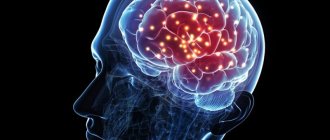| Anxious (“avoidant”) personality disorder | |
| Because of fear of ridicule and possible criticism, individuals with anxious personality disorder may avoid forming close relationships. | |
| ICD-10 | 60.660.6 |
| ICD-9 | 301.82301.82 |
| MedlinePlus | 000940 |
| eMedicine | ped/189 |
| MeSH | D010554 and D010554 |
Not to be confused with anxiety disorder.
Anxious (evasive, avoidant [note 1]) personality disorder
- a personality disorder characterized by a persistent desire for social withdrawal, feelings of inferiority, extreme sensitivity to negative evaluations of others, and avoidance of social interaction. People with anxious personality disorder often believe that they are bad at socializing or that their personality is unattractive, and avoid social interactions out of fear of being ridiculed, humiliated, rejected, or being disliked. They often present themselves as individualists and talk about feeling alienated from society.
Most often, anxiety personality disorder is first noticed between the ages of 18 and 24, associating it with perceived or real rejection from parents or peers during childhood. To date, it remains controversial whether feelings of rejection are a consequence of the increased attention to interpersonal interactions characteristic of people with the disorder.
In the Soviet tradition, the closest diagnosis is psychasthenia.
Diagnostic indicators
ICD-10
This section is transcribed from Personality Disorder. (edit | history)
Diagnostic criteria from the version of the International Classification of Diseases, 10th revision ICD-10, adapted for use in Russia (general diagnostic criteria for personality disorders, which must be met in all subtypes of disorders):[1]
Conditions that are not directly attributable to extensive brain damage or disease or other mental disorder and meet the following criteria:
- a) marked disharmony in personal attitudes and behavior, usually involving several areas of functioning, such as affectivity, excitability, impulse control, perceptual and mental processes, as well as style of relating to other people; in different cultural conditions it may be necessary to develop special criteria regarding social norms;
- b) the chronic nature of an abnormal style of behavior that arose a long time ago and is not limited to episodes of mental illness;
- c) the abnormal style of behavior is comprehensive and clearly disrupts adaptation to a wide range of personal and social situations;
- d) the above-mentioned manifestations always arise in childhood or adolescence and continue to exist into adulthood;
- e) the disorder causes significant personal distress, but this may only become apparent later in the course of time;
- f) usually, but not always, the disorder is accompanied by a significant deterioration in professional and social productivity.
— International Classification of Diseases (10th revision), adapted for use in the Russian Federation — /F60/ Specific personality disorders. Diagnostic criteria[1]
To classify a personality disorder into one of the subtypes defined in ICD-10 (for diagnosis of most subtypes), it is necessary that it meets at least three criteria defined for this type [1].
Diagnostic criteria from the official, international version of ICD-10 from the World Health Organization (general diagnostic criteria for personality disorders, which must be met in all subtypes of disorders):[2]
- G1. An indication that an individual's characteristic and consistent patterns of internal experience and behavior as a whole deviate significantly from the culturally expected and accepted range (or "norm"). Such a deviation must manifest itself in more than one of the following areas: 1) cognitive sphere (that is, the nature of perception and interpretation of objects, people and events; the formation of attitudes and images of “” and “others”);
- 2) emotionality (range, intensity and adequacy of emotional reactions);
- 3) controlling drives and satisfying needs;
- 4) relationships with others and the manner of solving interpersonal situations.
- G2. The deviation must be complete in the sense that inflexibility, lack of adaptability, or other dysfunctional characteristics are found in a wide range of personal and social situations (that is, not limited to one “trigger” or situation).
- G3. The behavior noted in G2 indicates
personal distress or adverse effects on the social environment.- G4. There must be evidence that the deviation is stable and long-lasting, beginning in late childhood or adolescence.
- G5. The disorder cannot be explained as a manifestation or consequence of other mental disorders of adulthood, although episodic or chronic conditions from sections F0 to F7 of this classification may exist simultaneously with it or arise against its background.
- G6. Organic brain disease, trauma or brain dysfunction should be excluded as a possible cause of the deviation (if such an organic condition is identified, rubric 07 should be used).
Original text (English)
- G1. Evidence that the individual's characteristic and enduring patterns of inner experience and behavior deviate markedly as a whole from the culturally expected and accepted range (or 'norm'). Such deviation must be manifest in more than one of the following areas: (1) cognition (ie ways of perceiving and interpreting things, people and events; forming attitudes and images of self and others);
- (2) affectivity (range, intensity and appropriateness of emotional arousal and response);
- (3) control over impulses and need gratification;
- (4) relating to others and manner of handling interpersonal situations.
- G2. The deviation must manifest itself pervasively as behavior that is inflexible, maladaptive, or otherwise dysfunctional across a broad range of personal and social situations (ie not being limited to one specific 'triggering' stimulus or situation).
- G3. There is personal distress, or adverse impact on the social environment, or both, clearly attributable to the behavior referred to under G2.
- G4. There must be evidence that the deviation is stable and of long duration, having its onset in late childhood or adolescence.
- G5. The deviation cannot be explained as a manifestation or consequence of other adult mental disorders, although episodic or chronic conditions from sections F0 to F7 of this classification may co-exist, or be superimposed on it.
- G6. Organic brain disease, injury, or dysfunction must be excluded as possible cause of the deviation (if such organic causation is demonstrable, use category F07).
— International Classification of Diseases (10th revision) — /F60/ Specific personality disorders. Diagnostic criteria[2]
The international classification of diseases "ICD-10", officially used in Russia, for diagnosing anxiety personality disorder requires the presence of general diagnostic criteria for personality disorder, plus the presence of three or more of the following personality characteristics:
- a) a constant general feeling of tension and heavy forebodings;
- b) ideas about one’s social inability, personal unattractiveness and inferiority in relation to others;
- c) increased concern about criticism or rejection in social situations;
- d) reluctance to enter into relationships without guarantees of being liked;
- e) limited lifestyle due to the need for physical safety;
- f) avoidance of social or professional activities associated with significant interpersonal contacts due to fear of criticism, disapproval or rejection.
Additional signs may include hypersensitivity to rejection and criticism.
Excluded:
- social phobias (40.140.1)[3].
DSM-5
The American Psychiatric Association's DSM-5, the official guide to diagnosing mental disorders in the United States, defines avoidant personality disorder as a persistent desire for social withdrawal, feelings of inferiority, hypersensitivity to negative evaluations, and begins in early adolescence, appears in a variety of forms, and manifests itself , in addition to the general criteria for a personality disorder, four (or more) of the following signs:
- Avoidance of professional activities that require meaningful interpersonal contact due to fear of criticism, judgment, or rejection.
- A person's reluctance to deal with people without confidence that they will like him.
- Restraining oneself from forming close relationships for fear of being shamed, ridiculed, or rejected due to low self-esteem.
- Concern about possible criticism or rejection in social situations.
- Inhibition in new social situations due to feelings of inadequacy.
- Perception of oneself as socially inept, unpleasant as a person, or “second-class” in relation to others.
- Increased reluctance to take risks or engage in new activities, as this may increase feelings of shame[4].
Differential diagnosis
Anxious personality disorder is often confused with antisocial personality disorder (sociopathy) due to its name; clinically, the term "antisocial" means disrespect for the norms and rules of society, not social withdrawal.
Avoidance of social activities is characteristic of both individuals with anxious personality disorder and schizoid personality disorder. A schizoid is characterized by a “dull” affect and a desire to be left alone, while an anxious type wants to communicate, but feels fear and self-doubt[5]. People with anxious personality disorder fear that their identity will be rejected and devalued, so they avoid communication.
With dependent personality disorder, the clinical picture is similar, the difference is that the dependent personality type feels the fear of separation, and the anxious personality type feels the fear of establishing contact[5].
Relationship with other mental disorders
Researchers suggest that people with anxious personality disorder may also suffer from social anxiety by over-monitoring their own internal feelings during social interactions. However, unlike social phobes, they are also overly attentive to the reactions of the people with whom they interact. The extreme stress caused by this monitoring can cause slurred speech and taciturnity in many people with anxious personality disorder. They are so busy observing themselves and others that fluent speech becomes difficult.
Anxious personality disorder is most common among people with anxiety disorders, although the likelihood of comorbidity varies due to differences in diagnostic tools. Researchers suggest that approximately 10–50% of people with panic disorder and agoraphobia have an anxious personality disorder, as do 20–40% of people with social phobia. Some studies indicate that up to 45% of people with an anxiety disorder and up to 56% of people with obsessive-compulsive disorder have an anxious personality disorder[6]. Although not mentioned in the DSM-IV, previously theorists identified “mixed avoidant-borderline personality” (APD/BPD), which was a combination of features of borderline personality disorder and anxious personality disorder[7].
Introduction[ | ]
Such fears can be caused by imaginary or actual observation from the outside. A person with social phobia may realize that his fears of social interaction are excessive or unreasonable, but this does not make overcoming them any easier. Some people with social phobia fear a wide range of social situations, while others fear only specific ones, such as those in which they need to perform at their best.
In most cases, social phobia begins to appear at an early age. 50% of those suffering from this disease developed symptoms before they were 11 years old, and 80% before they reached 20 years of age. Because the disease begins to appear so early, comorbid disorders such as depression or substance abuse may also occur. As a rule, the psychological symptoms of social phobia are supplemented by physiological ones, such as: redness of the skin, hyperhidrosis (sweating), tremors, rapid heartbeat, nausea. Stupor and rapid, slurred speech may be present. In situations involving severe stress, panic attacks are possible. Early diagnosis usually helps minimize symptoms and avoid the development of additional (comorbid) disorders such as depression. Social phobia is sometimes called the “disease of missed opportunities”[2][3][4][5][6][7][8][9].
Causes
The causes of anxious personality disorder are not completely clear. A combination of social, genetic and psychological factors may influence the occurrence of the disorder. The disorder may occur due to temperamental factors that are hereditary. In particular, various anxiety diseases in childhood and adolescence may be associated with a melancholic temperament
, characterized by hereditary behavior, including such traits as shyness, fearfulness and withdrawal in new situations[8].
Many people with anxious personality disorder have painful experiences of constant rejection and criticism from parents and/or others. The desire not to break ties with rejecting parents makes such a person thirsty for relationships, but her desire gradually develops into a protective shell against constant criticism[9].
Reasons[ | ]
Research into the causes of social phobia is conducted in a wide range of theories and fields of knowledge - from neurobiology to sociology. However, scientists have yet to figure out the exact causes of social anxiety. Current evidence suggests that genetic predisposition plays a major role in combination with social and environmental factors[35].
Genetic and family factors[ | ]
Researchers have demonstrated [ source not specified 1331 days
] that the risk of being in a state of social anxiety increases 2-3 times if any of your immediate family has also experienced or is experiencing the same disorder.
Possibly due to genetic inheritance and/or children picking up their parents' social fears through observation. Studies of twins adopted from different families show that if one twin develops social anxiety disorder, the other is 30% to 50% more likely to develop the disorder than the general population.[36] Researchers have suggested[ clarify
] that parents of children with social anxiety disorder themselves suffer from social anxiety (
Bruch and Heimberg
, 1994;
Caster et al
., 1999), and shyness found in adoptive parents was significantly correlated with shyness in adopted children (
Daniels and Plomin
, 1985).
Excessive care or criticism of children in the family also increases the risk of developing social phobia[21][37].
In parallel with these data, there are results from studies of behavioral inhibition in newborns. Behavioral inhibition is not a pathology, but rather a feature of the functioning of the nervous system, in which the individual is more focused on himself and fears the world around him. Approximately 10-15% of people exhibit this temperament at birth, which is a risk factor for developing social anxiety disorder (social phobia) in later life[38].
The influence of past episodes of negative communication experiences[ | ]
Researchers have shown that previous negative socialization experiences can provoke the development of social phobia[39][40], especially in people with hypersensitivity. In approximately half of those with social phobia, a clear relationship was found between psychological trauma associated with a humiliating or traumatic social event and worsening social phobia symptoms[41]. It is not only personal social experience that matters: simply observing the negative experiences of others makes the development of social phobia more likely [42]. Social anxiety can also be a cumulative effect: failure to fit in, rejection or rejection by peers, years of psychological bullying ( Beidel and Turner
, 1998).
Shy adolescents and anxious adults especially emphasized in their resumes that they often encountered peer rejection in their lives[43], expressed in various forms of psychological and physical violence ( Gilmartin
, 1987). One study found that popularity was negatively correlated with social anxiety, and children who were unpopular with their peers reported higher levels of anxiety and fear of being negatively evaluated than controls.[44] It is clear that children with social phobia tend to receive fewer positive reactions from peers[45], which may lead to avoidant behavior[46].
Symptoms
Symptoms that are not diagnostic criteria include:[10]
- excessive fear of rejection or disapproval from others;
- avoidance of interpersonal relationships;
- feelings of personal inadequacy;
- decreased self-esteem;
- distrust of others;
- self-isolation from society;
- extreme degree of shyness/timidity;
- emotional distancing in intimate relationships;
- excessive shyness;
- self-criticism about problems in relationships with others;
- hypersensitivity to criticism;
- extreme anxiety and awkwardness in social situations;
- problems in professional activity;
- feeling of loneliness;
- feeling of being “second-class” compared to others;
- chronic abuse or dependence on certain substances.
People with anxious personality disorder are overly preoccupied with their shortcomings and form relationships with others only if they are confident that they will not be rejected. Loss and rejection are so painful that these people choose to be alone rather than take risks and connect with people.[9]
Diagnostics
The doctor will evaluate the person's symptoms, ask about their medical history, and conduct a psychiatric evaluation to diagnose social adjustment disorder. This examination helps rule out any other possible mental disorders. The doctor may ask about any recent events that might have caused the adjustment disorder.
In children, doctors may want to check how they are developing, as this can affect emotional and behavioral responses.
In some cases, blood and urine tests are ordered to make sure another condition is not causing the symptoms.
Therapy
Therapy may include a variety of techniques, such as social skills training, cognitive psychotherapy, gradual social building, group therapy for social skills, and sometimes pharmacotherapy[11].
Gaining and maintaining the patient's trust is key in therapy, as people with anxious personality disorder often begin to avoid therapy sessions if they do not trust the therapist. The primary goal for both individual therapy and group social skills training is to persuade the patient to question his exaggerated negative beliefs about himself[12].
Treatment[ | ]
An effective treatment option is cognitive behavioral psychotherapy[10][11][12], especially a combination of cognitive behavioral group therapy with exposure (English)Russian[13]. Gradual adaptation is made to those social situations that cause anxiety in the patient and in which he should take certain actions. Therapeutic behavioral training and role-playing games play a significant role in restoring communication skills in patients who have avoided social contacts for a long time. Cognitive methods help the patient restore self-esteem and correctly relate to the reactions of others to his behavior[14]. The patient develops new mental attitudes when assessing situations that provoke anxiety and relief from physical symptoms[15]. Relaxation therapy may also be used[16]:402.
Medications can be used if the patient categorically refuses psychotherapy, but their effectiveness is very limited and is aimed mainly at eliminating symptoms - anxiety and stress. Attention to social anxiety has increased in recent years, and medicinal treatments have also been proposed:
- Antidepressants: selective serotonin reuptake inhibitors (SSRIs);
- serotonin and norepinephrine reuptake inhibitors;
- monoamine oxidase inhibitors (MAOIs): moclobemide.
Benzodiazepines, such as clonazepam, are also used in the short-term treatment of social phobia[17]. Despite their effectiveness at the initial stage of therapy, a transition to other drugs is recommended in the future due to the risk of depression and the possibility of physical dependence. After discontinuation of benzodiazepines, the risk of relapse of social phobia is high[18].
Notes
- Used in the Diagnostic and Statistical Manual of Mental Disorders DSM-IV and DSM-5, English. avoidant personality disorder.
Sources
- ↑ 1 2 3 World Health Organization.
F6 Personality and behavior disorders in adulthood [F60—F69] // International Classification of Diseases (10th revision). Class V: Mental and behavioral disorders (F00-F99) (adapted for use in the Russian Federation). - Rostov-on-Don: Phoenix, 1999. - P. 245-246. — ISBN 5-86727-005-8. - ↑ 1 2 World Health Organization.
The ICD-10 Classification of Mental and Behavioral Disorders. Diagnostic criteria for research. — Jeneva. — P. 149-150. — 263 p. (English) - World Health Organization.
F6 Personality and behavior disorders in adulthood // F60.6x Anxious (avoidant, avoidant) personality disorder // International Classification of Diseases (10th revision). Class V: Mental and behavioral disorders (F00-F99) (adapted for use in the Russian Federation). - Rostov-on-Don: “Phoenix”, 1999. - P. 251-252. — ISBN 5-86727-005-8. - American Psychiatric Association.
Diagnostic and Statistical Manual of Mental Disorders, Fifth Edition (DSM-5). - Arlington, VA: American Psychiatric Publishing, 2013. - P. 672-673. — 992 p. — ISBN 978-0-89042-554-1. — ISBN 978-0-89042-555-8. — ISBN 0-89042-554-X. - ↑ 1 2 Yu. V. Popov, V. D. Vid.
Modern clinical psychiatry. - M.: Expert Bureau-M, 1997. - P. 303-306. — 496 p. — ISBN 5-86065-32-9 (erroneous). - Van Velzen, CJM
Social phobia and personality disorders: Comorbidity and treatment issues. - Groningen: University Library Groningen, 2002. - Kantor, M.
Avoidant personality disorder // Distancing: A guide to avoidance and avoidant personality disorder. - revised and expanded edition. - Westport, Connecticut: Praeger Publishers, 2003. - 296 p. — ISBN 978-0275978297. - Suzanne M. Sutherland, MD
Avoidant Personality Disorder Causes, Frequency, Siblings and Mortality—Morbidity.
Avoidant Personality Disorder
. Armenian Medical Network (2006). Retrieved February 26, 2007. Archived March 16, 2012. - ↑ 1 2 Gary Gilles MA, Paula Ford-Martin MA
Avoidant personality disorder.
Avoidant personality disorder
. Healthline Networks (2003). Retrieved February 26, 2006. Archived March 16, 2012. - Marilyn Gaudette.
Avoidant personality disorder.
Avoidant personality disorder
. Gordon College - Barnesville, GA (2003). Retrieved February 26, 2006. Archived March 16, 2012. - Comer, RJ
Avoidant personality disorder // Fundamentals of abnormal psychology. — 4th ed. - New York: Worth Publishers, 2004. - 497 p. — ISBN 978-0716786252. - Eckleberry, Sharon C.
"Dual Diagnosis and the Avoidant Personality Disorder."
"The Dual Diagnosis Pages: From Our Desk"
(March 25, 2000). Retrieved February 6, 2007. Archived March 16, 2012.
Symptoms[ | ]
Cognitive[ | ]
People suffering from social phobia experience a real horror of how they will be assessed by outside observers. They are almost always too focused on themselves - on how they look, how they behave. Such people also tend to place higher demands on themselves. A person suffering from social phobia tries his best to make a good impression on others, but at the same time he is sure that he will not be able to do this. Countless times he can play out in his head possible scenarios for the development of situations that provoke his anxiety, analyzing where and what he could have done or did wrong. These thoughts can be extremely intrusive and torment a person for weeks after a corresponding stressful situation[19]. Social phobes have an inadequate understanding of themselves and their capabilities, and they tend to see themselves in a bad light. There is also evidence that the memory of such people stores more bad memories (ordinary people forget bad things faster)[20].
For example, a new employee in a team meets future colleagues and accidentally stumbles during his speech. If he is a social phobe, then after this he will most likely have severe anxiety and will think about whether he made a good impression; Moreover, the memory of this event will persist and become a source of concern in the future.
Behavioral[ | ]
As mentioned above, social phobia, or social anxiety disorder, is a persistent fear of a wide range of situations in which a person is evaluated by others, while he is afraid of creating a bad opinion of himself in them. This condition differs from ordinary “shyness” in that it leads to serious disruptions in the subject’s life. He begins to avoid any contact with people, especially in small groups; dates, parties. Beware of talking to strangers, visiting restaurants, etc.[21] People with social phobia are afraid to look into the eyes of their interlocutor[21][22].
According to psychologist B.F. Skinner, phobias are primarily characterized by avoidant behavior. A person simply begins to be wary of any situations that provoke anxiety in him.
Physiological[ | ]
The physiological effects experienced by patients are similar to those observed in other anxiety spectrum disorders[23]. In adults, this may include tears, excessive sweating, nausea, difficulty breathing, tremors in the limbs, and changes in heart rate as a result of triggering the “fight or flight” response. Gait disorders are possible (in a situation where a person worries whether he is walking “correctly”), especially when walking past a group of people. Involuntary redness of the skin of the face is also a fairly common symptom among those suffering from social phobia[20]. All these physiological reactions, easily noticed by others, further increase anxiety in the presence of strangers.
The American Diagnostic and Statistical Manual of Mental Disorders, 5th edition (DSM-5) lists paruresis (fear or inability to urinate in public) as one of the symptoms characteristic of social phobias[24].
Association with other disorders[ | ]
There is a high degree of comorbidity between social phobia and other mental disorders. Social phobia is usually accompanied by low self-esteem and depression, perhaps due to a lack of personal relationships and long periods of isolation associated with a fear of communicating with other people. Trying to get rid of anxiety and depression, a person may resort to using alcohol and drugs, which, in turn, can lead to addiction. There is evidence that approximately 20% of patients with social phobia also suffer from alcoholism[25]. One of the most common comorbid disorders is depression. In one study of 14,263 people, 2.4% were diagnosed with social phobia and of these, 16.6% were also diagnosed with depression[26]. In addition to depression, those suffering from social phobia are often diagnosed with: panic disorder (33%), generalized anxiety disorder (19%), post-traumatic stress disorder (36%), substance abuse (18%), and suicide attempts (23%)[27]. One study noted that in patients with comorbid alcoholism, panic disorder, or depression, social phobia preceded the development of the corresponding disorder in 75%, 61%, and 90% of cases, respectively[28][29].
Although the DSM-IV manual states that a person cannot be classified as having social phobia if their symptoms are better described by criteria for autism spectrum disorders such as Asperger's syndrome or autism,[30] some people suffer from both conditions at the same time. One study found a comorbidity rate of 28% between autism and social phobia[30].
There is evidence that social phobia is associated with bipolar disorder and attention deficit disorder[31][32]. In addition, studies have shown that patients with social phobia are more likely to develop hypomania while taking antidepressants than those without social phobia [33][34].
Literature
- Comer, RJ
Avoidant personality disorder // Fundamentals of abnormal psychology. — 4th ed. - New York: Worth Publishers, 2004. - 497 p. — ISBN 978-0716786252. - Eckleberry, Sharon C.
Dual Diagnosis and the Avoidant Personality Disorder: [arch. 03/16/2012] // The Dual Diagnosis Pages: From Our Des. — 2000. — March 25. — Date of access: 02/06/2007. - Kantor, M.
Avoidant personality disorder // Distancing: A guide to avoidance and avoidant personality disorder. Reworked and additional ed. - Westport, Connecticut: Praeger Publishers, 2003. - 296 p. — ISBN 978-0275978297. - Rettew, DC
Avoidant Personality Disorder: Boundaries of a Diagnosis // Psychiatric Times. — 2006. — July 1. - Van Velzen, CJM
Social phobia and personality disorders: Comorbidity and treatment issues. - Groningen: University Library Groningen, 2002.











